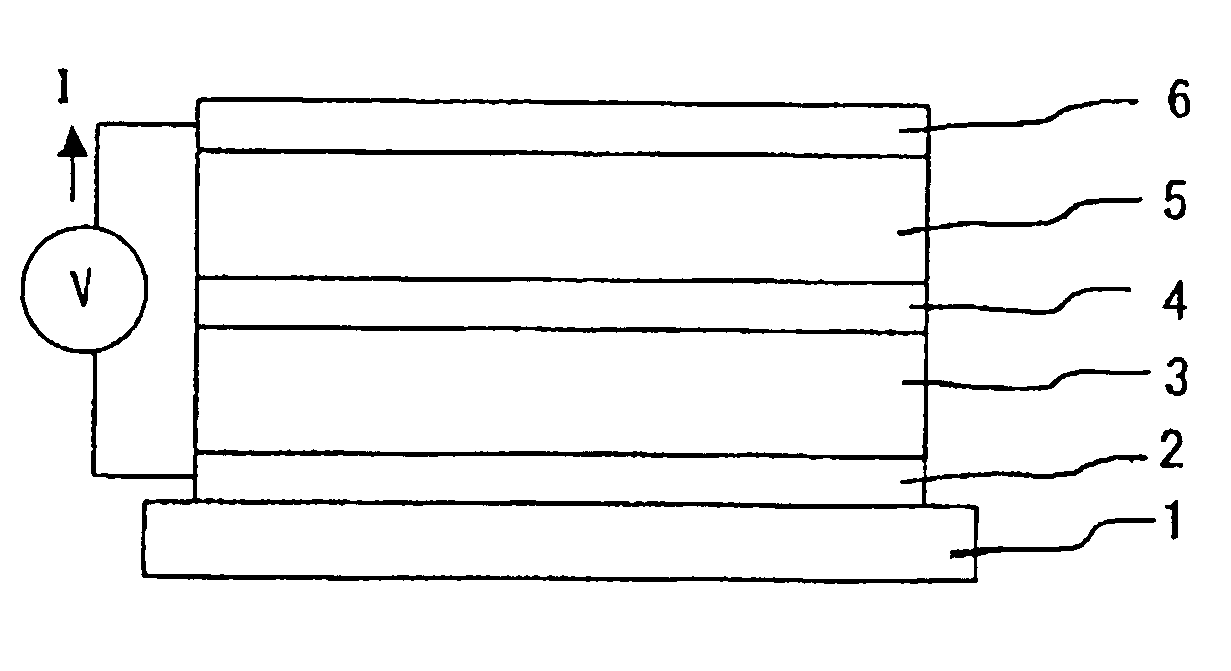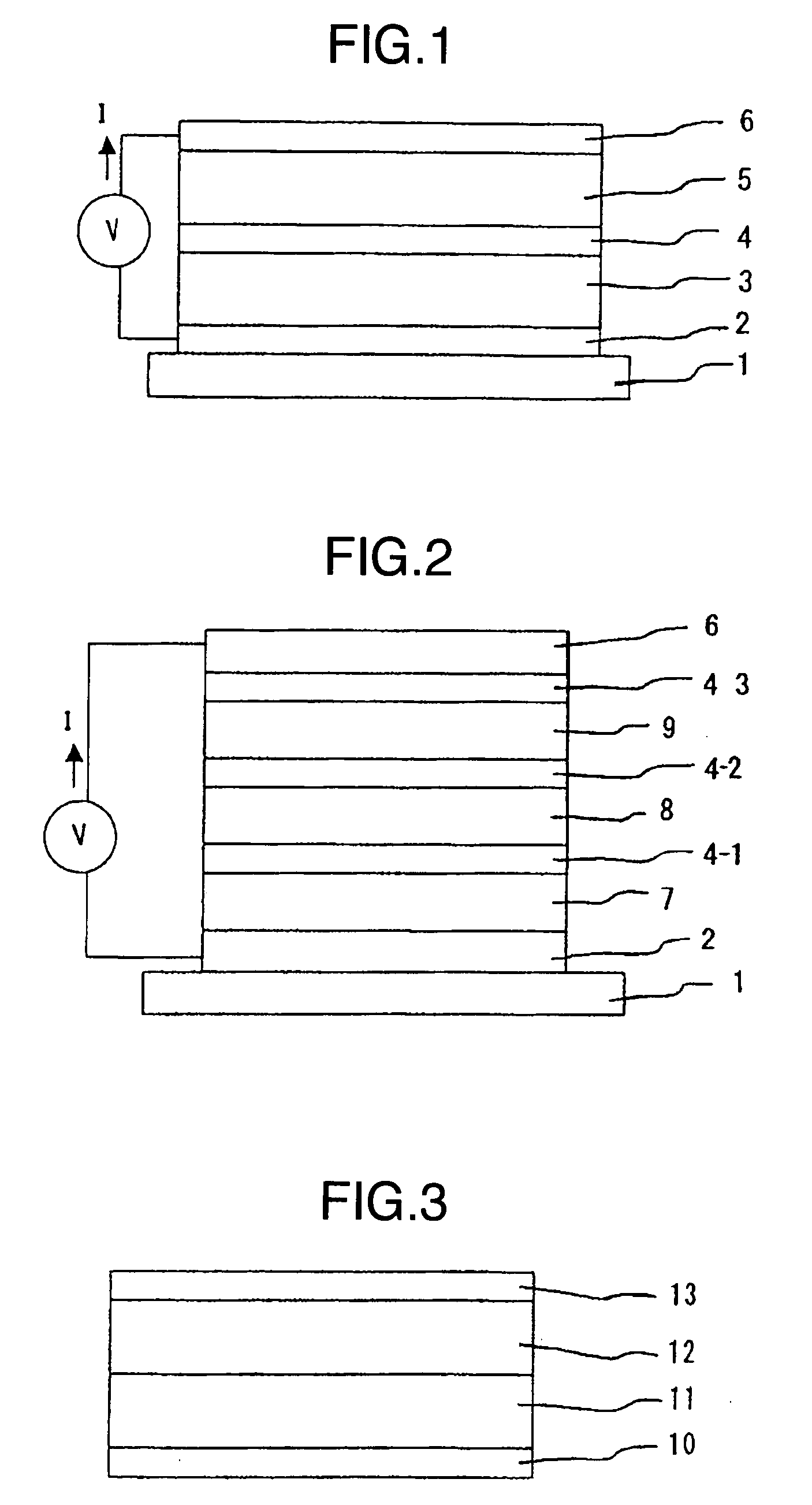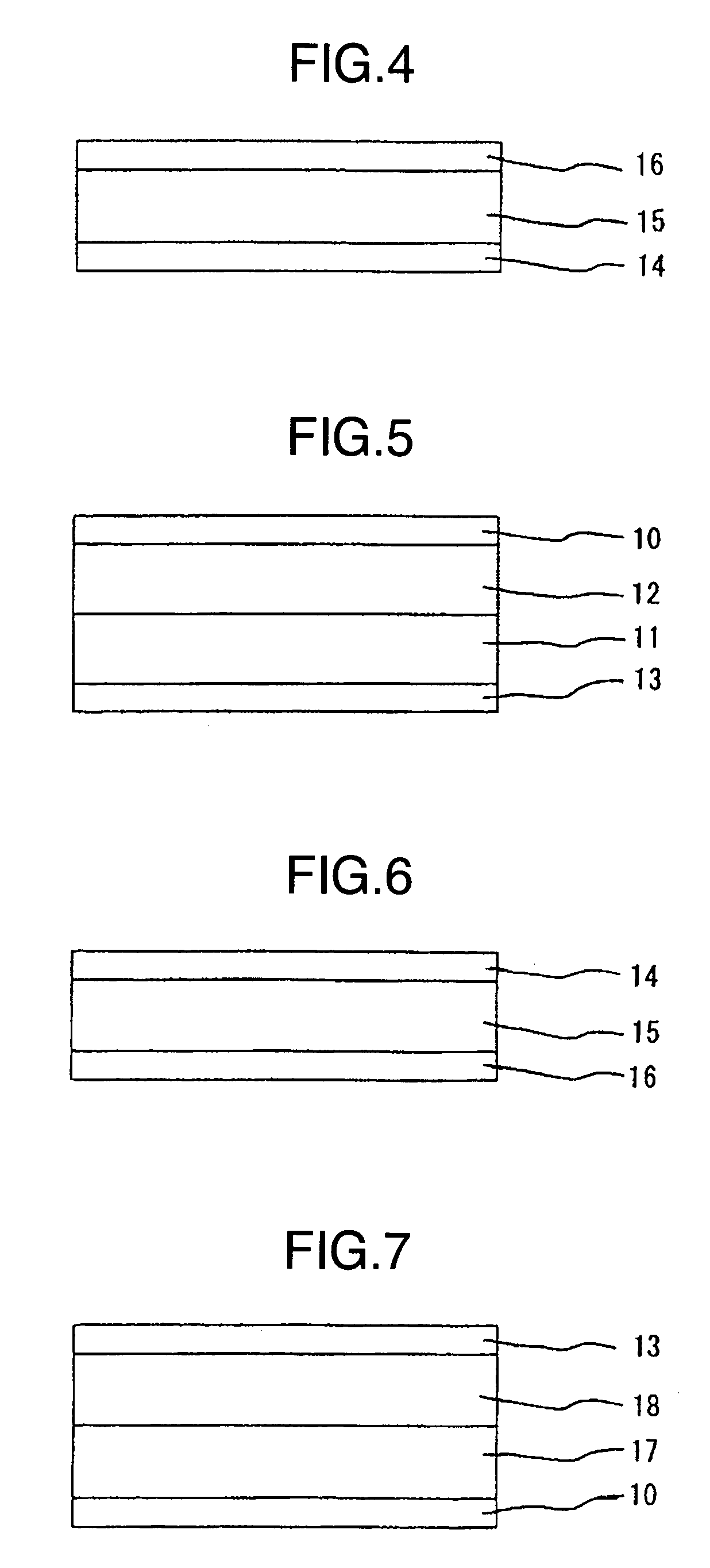Organic light-emitting display
a light-emitting display and organic technology, applied in the field of organic light-emitting displays, can solve the problems of the most difficult to secure high-efficiency red, and achieve the effects of reducing the light-emitting efficiency, and enhancing the efficiency of electron injection
- Summary
- Abstract
- Description
- Claims
- Application Information
AI Technical Summary
Benefits of technology
Problems solved by technology
Method used
Image
Examples
example 1
[0069] The embodiment of EXAMPLE 1 is described by referring to the drawings.
[0070] This embodiment relates to an organic light-emitting element, illustrated in FIG. 1, structured to emit light from the lower electrode side, and is described by referring to FIGS. 1, 3 and 4. FIG. 1 is a cross-sectional view of the organic light-emitting element of this embodiment. Referring to FIG. 1, the organic light-emitting element comprises the board 1 which supports the lower electrode 2, light-emitting unit 3, charge-generating layer 4, light-emitting unit 5 and upper electrode 6, wherein the charge-generating layer 4 is provided between the light-emitting units 3 and 5.
[0071] The board 1 can be made of a transparent material, e.g., quartz, glass or plastic (e.g., polyester, polymethyl methacrylate, polycarbonate or polysulfone), formed into a film, sheet or the like.
[0072] The lower electrode 2 formed on the board 1 worked as the anode in EXAMPLE 1. It can be made of a transparent, electr...
example 2
[0090] This embodiment relates to an organic light-emitting element, illustrated in FIG. 1, structured to emit light from the upper electrode 6 side, and is described by referring to FIGS. 1, 5 and 6. FIG. 1 is a cross-sectional view of the organic light-emitting element of this embodiment. The element comprises the board 1 which supports the lower electrode 2, light-emitting unit 3, charge-generating layer 4, light-emitting unit 5 and upper electrode 6, wherein the charge-generating layer 4 is provided between the light-emitting units 3 and 5.
[0091] The board 1 can be made of a transparent material, e.g., quartz, glass or plastic (e.g., polyester, polymethyl methacrylate, polycarbonate or polysulfone), formed into a film, sheet or the like.
[0092] The lower electrode 2 worked as the cathode in EXAMPLE 2. It was formed on the board 1, where about 10 mg of Al and 5 mg of a starting material for LiF, each put in a sublimation boat of molybdenum, were deposited in such a way to form t...
example 3
[0110] This embodiment relates to an organic light-emitting element, illustrated in FIG. 1, structured to emit light from the board 1 side, and is described by referring to FIGS. 1, 7 and 8, where a triplet material (phosphorescence-emitting material) is used as a light-emitting material. FIG. 1 is a cross-sectional view of the organic light-emitting element of this embodiment. Referring to FIG. 1, the organic light-emitting element comprises the board 1 which supports the lower electrode 2, light-emitting unit 3, charge-generating layer 4, light-emitting unit 5 and upper electrode 6, wherein the charge-generating layer 4 is provided between the light-emitting units 3 and 5.
[0111] The board 1 can be made of a transparent material, e.g., quartz, glass or plastic (e.g., polyester, polymethyl methacrylate, polycarbonate or polysulfone), formed into a film, sheet or the like.
[0112] The lower electrode 2 formed on the board 1 worked as the anode in EXAMPLE 3. It can be made of a transp...
PUM
 Login to View More
Login to View More Abstract
Description
Claims
Application Information
 Login to View More
Login to View More - R&D
- Intellectual Property
- Life Sciences
- Materials
- Tech Scout
- Unparalleled Data Quality
- Higher Quality Content
- 60% Fewer Hallucinations
Browse by: Latest US Patents, China's latest patents, Technical Efficacy Thesaurus, Application Domain, Technology Topic, Popular Technical Reports.
© 2025 PatSnap. All rights reserved.Legal|Privacy policy|Modern Slavery Act Transparency Statement|Sitemap|About US| Contact US: help@patsnap.com



